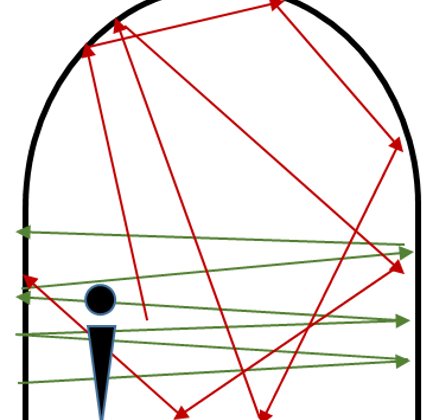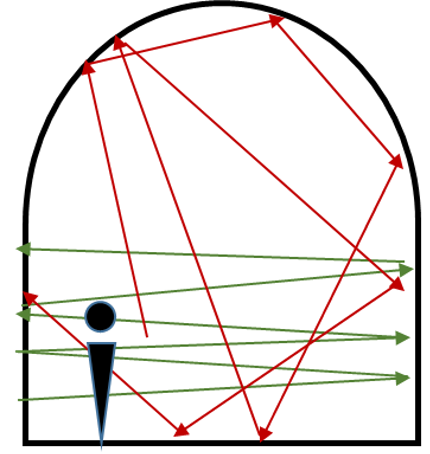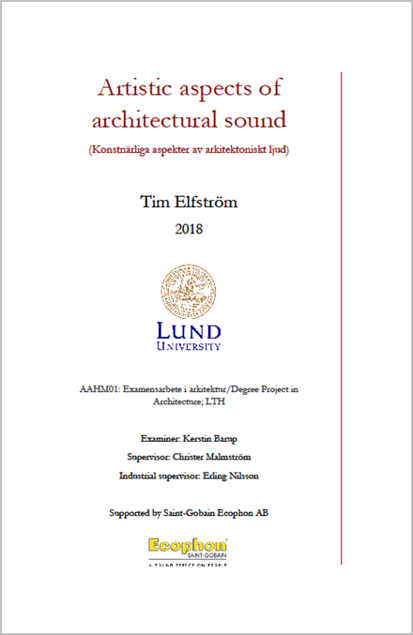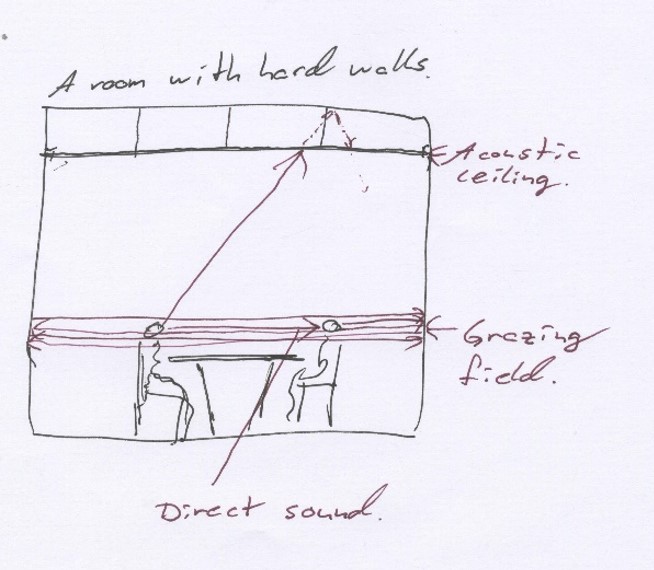
We asked Tim to give us a summary insight into his recent Thesis which he has completed as part of a collaborative Lund University study report with Ecophon. Tim is a qualified architect (Arkitekt MSA), has just recently completed his Master Thesis at Lund and is now a consultant helping other architects understand and include sound and acoustics in their work. He’s also a guitar maker and, as such, likes to use acoustic engineering techniques to achieve artistic quality. An ordinary room becomes a musical instrument, to be listened to and adjusted to suit the needs and tastes of its users.

On Architectural Sound
Some might say that sound and acoustics are the same thing but, to an architect at least, they’re a world apart. The difference is that sound is a sensory experience while acoustics is an engineering discipline. “Acoustics” is concerned with generating and regulating pressure waves, which are perceived as sound. Both sound and acoustics have their places in the process of designing a building but, for some reason, sound is often ignored, and acoustics forced to fall back on just following ISO 3382. In part, this problem likely originates in the fact that neither sound nor acoustics is much considered at schools of architecture, at least not in Sweden. It’s a failure in linking the physical phenomena and understanding to architectural form.
As a guitar maker of nearly a decade, I decided to spend my final year at Lund School of Architecture searching for a way of integrating my knowledge of guitar acoustics with regular architectural work. The result was an internship at Saint-Gobain Ecophon AB and a Master Thesis that explored various ways of regarding sound from an architectural and artistic point of view. It turned into what looks like a pre-study for a much larger project that would likely result in a book to teach architectural students (and practitioners) how to include sound in their work-flows (and communicate with physicist-acousticians, and vice-versa).

The thesis looked at architectural sound from four different perspectives:
- A quick foraging into architectural theory yielded a few pages about why sound is important but little guidance to designing it.
- Classical literature gave a perspective of how non-architects are aware of the sound around them. Virginia Woolf and D.H. Lawrence were called forth as witnesses to the power of evoked sonic impressions to make a reader feel included.
- Explaining some basic room-acoustic phenomena in an accessible way and relating them directly to architectural form and material properties. The RAC-parameters were introduced and explained: Reverberation time, Speech Clarity and Sound Strength. The design of absorbers was also discussed.
- Applying the theory above to a small case study. A restaurant was examined and discussed.

The report concludes by making the following suggestions for further research (quoted):
- “Collect examples [of spaces] and explain why they work in terms of visual aesthetics and acoustic behaviour.”
- “Develop the thoughts about how architectural sound affects the aesthetic value of spaces and places.”
- “Use the concept of this report as a basis for a book that teaches acoustics to architectural students in a relevant and accessible way.”
- “Investigate how the measurable parameters correlate to perceived spatial qualities in different types of rooms.”
- “Develop a vocabulary for architectural sound.”
Intriguing, don’t you think? At the very least, it’s an interesting place to start.
You can download the full pdf here. If you would like to know more, please contact Tim here.

